AMUR FALCON
FALCO AMURENSIS
BASIC:
Size:
28-31 cm
11-12 Inch
Primary color: brown
Secondary color: gray
(Bird may have more colors)
LOCAL NAMES:
Gujarati: લાલપગ શાહીન
Malayalam: അമ്യൂർ ഫാൽക്കൺ
Marathi: अमूर ससाणा

Introduction
The Amur Falcon, with its intriguing identity, captivating habits, and remarkable migratory routes, stands as a testament to the wonders of the avian world. In this article, we delve into the world of the Amur Falcon, exploring its identity, habitat, feeding habits, and unique voice. We also shed light on its migratory journey, focusing on the keywords “AMUR FALCON” and “amur falcon migration route.”
Identity: A Study in Contrasts
Males
The male Amur Falcon is characteristically cloaked in dark sooty grey plumage on its upper body, with rufous thighs and vent, creating a striking contrast. During flight, the wings reveal a stunning white lining, standing in sharp contrast to the dark wing feathers. It’s worth noting that adult males of the closely related red-footed falcon sport a dark grey wing lining. In certain regions of Africa, males can be mistaken for melanistic Gabar goshawks, but the distinguishing chestnut hue on the vent sets them apart. While superficial resemblances exist with the sooty falcon and grey kestrel, these two species are distinguishable by their yellow feet and cere. The Amur Falcon’s wings are notably long, with a span ranging from 63 to 71 cm, and at rest, the wingtip extends just beyond the tail-tip.
Females
Identifying female Amur Falcons can be more challenging as they share a pattern common to many falcons. However, they possess distinct features, including an orange eye-ring, a red cere, and reddish-orange feet. These characteristics set them apart from other falcons. In contrast to males, juveniles can only be confused with those of the red-footed falcon but lack the buffy underwing coverts.
Habit and Habitat: A Social and Crepuscular Falcon
The Amur Falcon is highly gregarious and crepuscular in nature. It often forms communal roosts, sometimes even alongside lesser kestrels. Its hunting style combines hawking insects with hovering, akin to the common kestrel. Its preferred habitat is open country, where it can put its hunting skills to good use.
Feeding Habits: Aerial Acrobats of the Avian World
The Amur Falcon primarily feeds during the late evening or early morning, displaying impressive aerial acrobatics to capture a wide range of insects in the air or on the ground. While most of their prey is caught in flight, they also pick prey by alighting on the ground. During the breeding season, they expand their diet to include small birds, mammals, and amphibians to feed their young. In Africa, the rainy season produces swarms of termites, locusts, ants, and beetles, providing an abundant source of food. Interestingly, their migration over the Arabian Sea aligns with the migration of dragonflies (Pantala flavescens), which are believed to sustain them during the most challenging part of their migration route.
The Vocal Personality
The Amur Falcon utters a distinctive shrill, screaming call of “Kew-kew-kew” when settling in to roost, and this vocalization often continues throughout the night.
Migration: An Epic Journey
The Amur Falcon’s migration is nothing short of epic. These small raptors breed in the vast expanse of southeastern Siberia and Northern China but embark on an incredible journey southward, wintering in the distant lands of Southern Africa. Their migratory route is a marvel of nature, showcasing their resilience and adaptability.
The AMUR FALCON’s Extraordinary Odyssey
The Amur Falcon’s migratory path is a sight to behold. As they leave their breeding grounds in Siberia and China, they navigate thousands of kilometers to reach their wintering destination in Southern Africa. This incredible journey involves crossing diverse landscapes, from rugged terrains to vast water bodies. They are truly the long-distance travelers of the avian world.
The AMUR FALCON’s Impact on Local Ecosystems
While on their migratory route, Amur Falcons play a vital role in the ecosystems they traverse. Their diet, consisting mainly of insects like termites, contributes to the delicate balance of the food web. Their arrival coincides with the rainy season in Africa, which brings forth swarms of insects, providing ample sustenance for these voracious hunters. Additionally, their synchronized migration with dragonflies helps control insect populations, benefiting both local ecosystems and agriculture.
Conclusion
In conclusion, the Amur Falcon is a captivating species that showcases the marvels of nature. From its distinctive appearance to its unique habits and epic migratory journey, it leaves bird enthusiasts and conservationists in awe. As these remarkable raptors continue their seasonal migrations, they serve as a testament to the resilience and wonder of the natural world.
FAQs
- Are Amur Falcons endangered?
- Amur Falcons were once threatened due to excessive hunting during their migratory stopovers, but conservation efforts have helped stabilize their populations.
- How far do Amur Falcons migrate?
- Amur Falcons travel thousands of kilometers on their migratory route from Siberia and China to Southern Africa, covering immense distances.
- What is the significance of the Amur Falcon's migration route?
- The Amur Falcon's migration route is ecologically important as it helps control insect populations and supports local ecosystems.
- How do Amur Falcons survive their arduous migration?
- These falcons rely on their hunting skills and feed on insects and dragonflies during their migration to sustain themselves.
In the world of avian wonders, the Amur Falcon stands as a testament to the beauty and resilience of nature, reminding us of the importance of protecting these magnificent creatures.

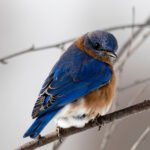

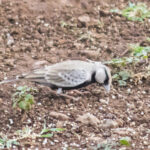
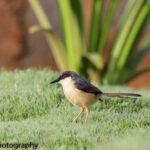
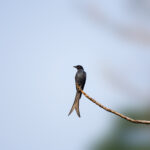
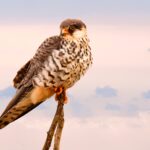
1 thought on “AMUR FALCON”